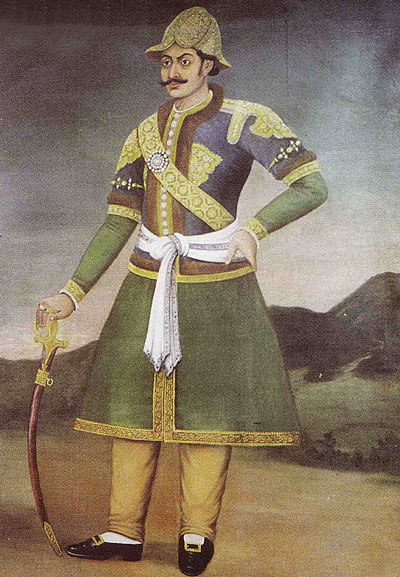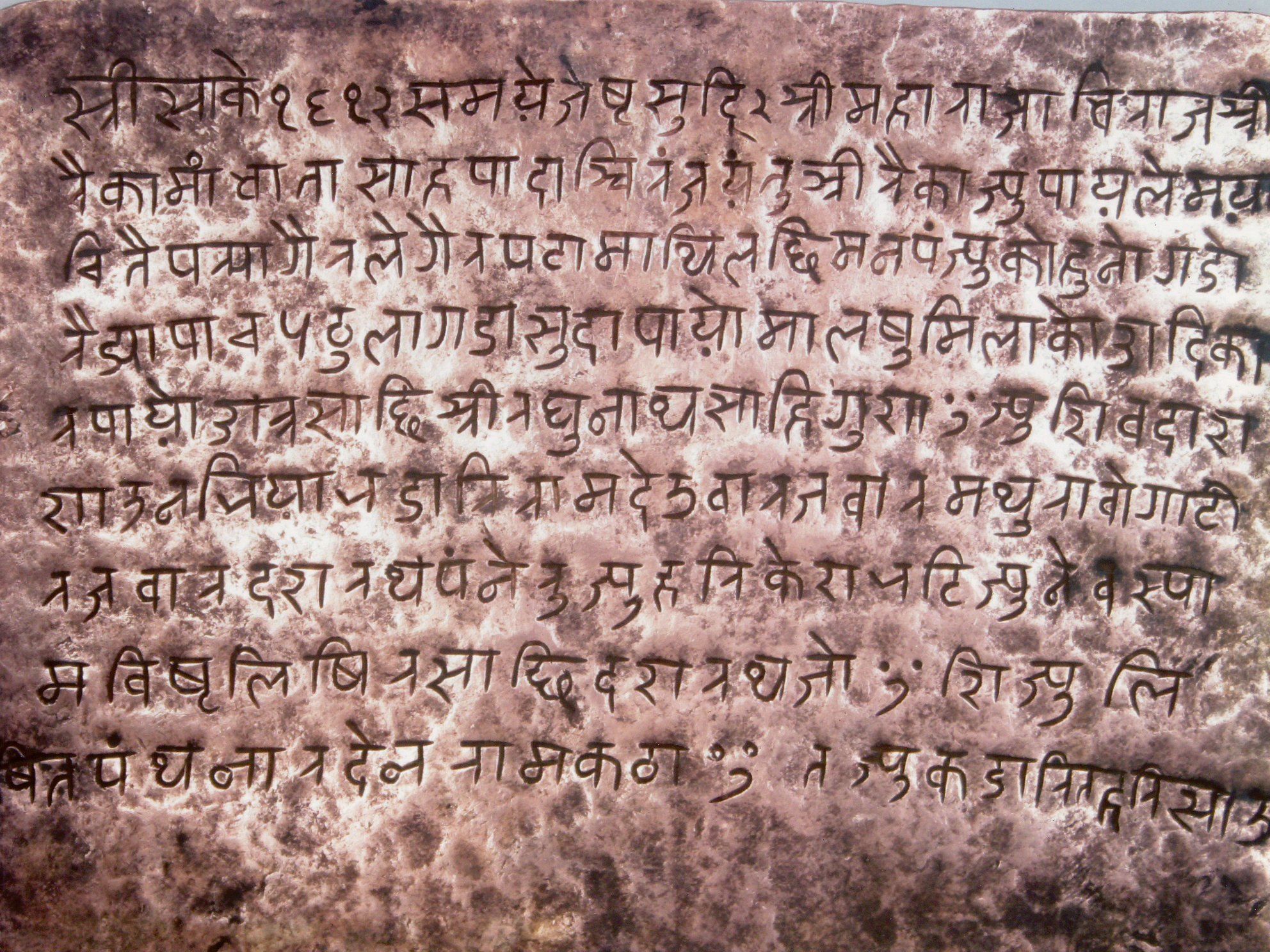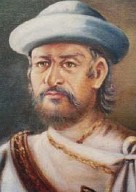|
Chhetri
Chhetri (Kshetri, Kshettri, Kshetry or Chhettri), ( ; IAST: ''Kṣetrī'') historically called Kshettriya or Kshetriya or Khas are Nepali language, Nepali speaking people historically associated with the warrior class and administration, some of whom trace their origin to migration from medieval India. Chhetri was a caste of administrators, governors, Bir Bhadra Thapa, warriors and military elites in the medieval Khasa kingdom, Khas Kingdom and Gorkha Kingdom (later unified Kingdom of Nepal). The nobility of the Gorkha Kingdom mainly originated from Chhetri families. They also had a strong presence in civil administration affairs. The bulk of Prime Minister of Nepal, prime ministers of Nepal before the Revolution of 1951, democratization of Nepal belonged to this caste as a result of the old Gorkhali aristocracy. Gorkha-based aristocratic Chhetri families included the Pande dynasty, the Basnyat dynasty, the Kunwar family (and their offspring branch, the autocratic Rana dynasty) an ... [...More Info...] [...Related Items...] OR: [Wikipedia] [Google] [Baidu] |
Khas People
Khas peoples or Khas Tribes, (; ) popularly known as Khashiya are an Indo-Aryan ethno-linguistic group native to the Himalayan region of the Indian subcontinent, in what is now the South Asian country of Nepal, as well as the Indian states of Uttarakhand, Himachal Pradesh, West Bengal, Assam and Sikkim. Khas consists of many subtribes like Kshetri, Thakuri, Bahun and Sanyasis and all spread across the Himalayas. According to the Constitution of Nepal, Bahun, Kshetris, Thakuris, and Sanyasis (Dashnami) who are citizens of Nepal should be considered as "Khas Arya" for electoral purposes. Historically, Khas were the speakers of an ancient ''Khas language'' from the Indo-Aryan language family and the earliest recorded speakers of the Western Pahari languages. The large portion of the Indo-Aryan speakers throughout lower Himalayas were the Masto people. An intrusion of this tribe from the Western and Northwestern Himalayas into Central Himalayas is substantiated b ... [...More Info...] [...Related Items...] OR: [Wikipedia] [Google] [Baidu] |
Pande Dynasty
The Pande family or Pande dynasty (also spelled as Pandey or Panday) (; or ) was a Chhetri political family with ancestral roots from Gorkha Kingdom that directly ruled Nepali administration affairs from the 16th century to 19th century as Mulkaji and Mukhtiyar (Prime Minister). This dynasty/family was one of the four noble families to be involved in active politics of Nepal together with the Shah dynasty, Basnyat family and Thapa dynasty before the rise of the Rana dynasty. The Pande dynasty is the oldest noble family to hold the title of Kaji. This family was decimated from political power in 1843 CE in the political massacre by Prime Minister Mathabar Singh Thapa as a revenge for his uncle Bhimsen's death in 1839. The family is descended from nobleman Ganesh Pande of the Gorkha Kingdom. Kalu Pande and Tularam Pande were descendants of Ganesh Pande. Pande dynasty and Thapa dynasty were the two chief political families who alternatively contested for central power i ... [...More Info...] [...Related Items...] OR: [Wikipedia] [Google] [Baidu] |
Bahun
Bahun (), also known as Hill Brahmins, are a Brahmin varna among the Khas of Nepal. They are a sub-caste of the Kanyakubja Brahmin while their origins are from Kannauj and the Himalayan belt of South Asia. According to the 2011 Nepal census, Bahun is the second most populous group after Chhetri. According to 1854 ''Muluki Ain'', the first Nepalese civil code, Bahuns were regarded as caste among sacred thread bearers ( Tagadhari) and twice-born Hindus. Origin Traditionally, Bahuns were members of the Khas community together Chhetris. Possibly due to political power of the Khasa Malla kingdom, Khas Brahmins and Khas Kshatriyas had high social status in the present-day western Nepal. Bahuns, regarded as upper class Khas group together with Chhetris, were associated mostly with the Gorkha Kingdom and its expansion. There appears to be general agreement in historical records and family genealogy that Hill Brahmins (both Purbia and Kumai Bahuns) migrated from the G ... [...More Info...] [...Related Items...] OR: [Wikipedia] [Google] [Baidu] |
Khas Brahmin
Bahun (), also known as Hill Brahmins, are a Brahmin varna among the Khas of Nepal. They are a sub-caste of the Kanyakubja Brahmin while their origins are from Kannauj and the Himalayan belt of South Asia. According to the 2011 Nepal census, Bahun is the second most populous group after Chhetri. According to 1854 ''Muluki Ain'', the first Nepalese civil code, Bahuns were regarded as caste among sacred thread bearers (Tagadhari) and twice-born Hindus. Origin Traditionally, Bahuns were members of the Khas community together Chhetris. Possibly due to political power of the Khasa Malla kingdom, Khas Brahmins and Khas Kshatriyas had high social status in the present-day western Nepal. Bahuns, regarded as upper class Khas group together with Chhetris, were associated mostly with the Gorkha Kingdom and its expansion. There appears to be general agreement in historical records and family genealogy that Hill Brahmins (both Purbia and Kumai Bahuns) migrated from the Gangetic ... [...More Info...] [...Related Items...] OR: [Wikipedia] [Google] [Baidu] |
Kunwar Family
The Kunwar family () was a noble Khas-Chhetri family in the Gorkha Kingdom and the Kingdom of Nepal. The Kunwars were linked to the Thapa dynasty and family of Amar Singh Thapa by marital lineages and, thus, to Pande dynasty through the Thapa dynasty. Three branches of the Kunwars; Ramakrishna, Jayakrishna and Amar Singh Kunwar were formed with opposite political aspirations. Bal Narsingh Kunwar (of Ramkrishna section) supported '' Mukhtiyar'' Bhimsen Thapa while Chandrabir Kunwar (of Jayakrishna section) supported ''Bada Kaji'' Amar Singh Thapa due to their marital relations with those families. Later, the Ramakrishna section of the family including Amarsingh established the Rana dynasty of Nepal and styled themselves as Rana Rajputs while Jayakrishna most section remained as Kunwars. Origins Genealogy The Kunwars of Nepal claim descent from a Rajput man named Ram Singh, who was said to belong to Kshatriya Varna. He was considered to have settled in Bhirkot, Nepal in 1404 ... [...More Info...] [...Related Items...] OR: [Wikipedia] [Google] [Baidu] |
Thapa Dynasty
Thapa dynasty or Thapa noble family ( ) also known as Dynasty of Borlang was a Chhetri political family that handled Nepali administration affairs from 1806 to 1837 A.D. and 1843 to 1845 A.D. as Mukhtiyar (Prime Minister). This was one of the four noble families to be involved in the active politics of the Kingdom of Nepal, along with the Shah dynasty, Basnyat family, and the Pande dynasty before the rise of the Rana dynastyor Kunwar family. At the end of 18th century, Thapas had extreme dominance over Nepalese Darbar politics alternatively contesting for central power against the Pande family. Bir Bhadra Thapa was a Thapa of Chhetri group and leading Bharadar during Unification of Nepal. His grandson Bhimsen Thapa became Mukhtiyar of Nepal and established Thapa dynasty to the dominating position of central court politics of Nepal. The Thapa family gave rise to the Rana dynasty of Jung Bahadur Rana, Jung Bahadur Kunwar Rana whose father Bal Narsingh Kunwar was the son-i ... [...More Info...] [...Related Items...] OR: [Wikipedia] [Google] [Baidu] |
Basnyat Dynasty
Basnyat/Basnet family or Basnyat/Basnet dynasty () was a Khas-Chhetri and a warlord clan family involved in the politics and administration of the Gorkha Kingdom and Kingdom of Nepal. This family got entry into Thar Ghar aristocracy group of Gorkha at the time of King Prithvi Narayan Shah. It was one of the four noble families to be involved in active politics of Nepal together with the Shah dynasty, Pande family and the Thapa dynasty before the rise of the Rana dynasty. This family is descended from Shivaram Singh Basnyat, the commander of Gorkhali forces and a member of Shreepali Basnyat clan of Gorkha. This family was maritally linked to ''Kala'' (Black) Pande section of the Pande dynasty through Chitravati Pande who married Kaji Kehar Singh Basnyat. This family was the last Kshatriya (Chhetri) political family to be wiped out from the central power by Jung Bahadur Rana of Kunwar family during the Bhandarkhal Massacre in 1846 for the conspiracy to take the power leadi ... [...More Info...] [...Related Items...] OR: [Wikipedia] [Google] [Baidu] |
Ethnic Groups In Nepal
Ethnic groups in Nepal are delineated using Languages of Nepal, language, ethnic identity or the caste system in Nepal. They are categorized by common culture and endogamy. Endogamy carves out ethnic groups in Nepal. Broad ethnic categories of Nepal *Note: The Madeshi Commission also removed Muslims and Tharus from the list of Madeshis in 2021. In the surname listing of ‘Surname Enumeration of Madheshi Community in Nepal -2078 Vikram Samvat, B.S.' conducted by the Madheshi Commission, Tharus in sub-group-1 and Muslims in sub-group-2 have been removed. Linguistic groups Nepal's diverse linguistic heritage evolved from 2 major language groups: Indo-European languages and Tibeto-Burman languages. Nepal's languages are mostly either Indo-European languages, Indo-European or Sino-Tibetan languages, Sino-Tibetan, while only a very few of them are Austroasiatic languages, Austro-Asiatic and Dravidian languages, Dravidian. Out of 123 languages of Nepal, the 48 Indo-European lang ... [...More Info...] [...Related Items...] OR: [Wikipedia] [Google] [Baidu] |
Kingdom Of Nepal
The Kingdom of Nepal was a Hindu monarchy in South Asia, founded in 1768 through the unification of Nepal, expansion of the Gorkha Kingdom. The kingdom was also known as the Gorkha Empire and was sometimes called History of Asal Hindustan, Asal Hindustan. Founded by Prithvi Narayan Shah, a Gorkha monarch who claimed Thakuri ancestry from the Chaubisi Rajya, chaubisi principalities, the kingdom endured for 240 years under the formal rule of the Shah dynasty, whose authority fluctuated over time. It lasted until 2008, when the monarchy was abolished and the country became the Federal Democratic Republic of Nepal, Federal Democratic Republic. After the invasion of Tibet and plundering of Digarcha by Nepali forces under Bahadur Shah of Nepal, Prince Regent Bahadur Shah in 1792, the 8th Dalai Lama, Dalai Lama and Chinese Ambans reported to the Chinese administration for military support. The Chinese and Tibetan forces under Fuk'anggan attacked Nepal but went for negotiations afte ... [...More Info...] [...Related Items...] OR: [Wikipedia] [Google] [Baidu] |
Hinduism In Nepal
Hinduism is the largest religion of Nepal. In 2006, the country declared itself a secular country through democracy, after the abolition of its monarchy. According to the 2021 census, the Hindu population in Nepal is estimated to be around 23,677,744 which accounts for at least 81.19% of the country's population, the highest percentage of Hindus of any country in the world. Vikram Samvat, one of the two official calendars used in Nepal, is a solar calendar essentially the same to that widespread in North India as a religious calendar, and is based on Solar unit of time. Among the ethnic groups are the Bahun, Thakuri, Tharu, Chhetri, Magars, Hill Dalits, Madheshi, Newari people. Meanwhile, among the major ethnic groups Sherpa, Rai, Limbu, Gurung and Tamang have lowest percentage of followers of Hinduism within the group. History Historians and local traditions say that a Hindu sage named "Ne" established himself in the valley of Kathmandu during prehistoric time ... [...More Info...] [...Related Items...] OR: [Wikipedia] [Google] [Baidu] |
Thakuri
The Thakuri (Nepali: ठकुरी) . This term is Nepalese title ""Thakuri"", which translates to 'master of the estate'. The term denotes the royal descendants of kings of Baise Rajya and Chaubisi Rajya. During the height of their influence, the Thakuri caste played a pivotal role in shaping the political landscape of Nepal. They held positions of authority and governance, contributing to the administration and stability of the region. Their lineage was highly regarded, and they were often sought after for leadership roles within the kingdom. Notably, members of the Shah dynasty, which ruled Nepal for centuries, were descendants of the Khand Thakuri caste from Chaubisi. The Shah royal family held significant sway over Nepalese affairs, guiding the nation through various periods of prosperity and turmoil. The Thakuris forged a legacy deeply rooted in Nepalese history. Their contributions to politics, culture, and society continue to be remembered and celebrated, reflecting t ... [...More Info...] [...Related Items...] OR: [Wikipedia] [Google] [Baidu] |
Bir Bhadra Thapa
Bir Bhadra Thapa or Birabhadra Thapa () also spelled Virabhadra or Virbhadra, was a politician, courtier and military officer in the Gorkha Kingdom during the 18th century. Born in the medieval Tanahun Kingdom, he left his ancestral property there and migrated to the uprising Gorkha Kingdom. He got entry into the minor ranks of the military of King Prithvi Narayan Shah due to being a nephew of Sura Prabha, the wife of military commander Shivaram Singh Basnyat of the Basnyat dynasty. Thereafter, he took part in the various battles of the Unification of Nepal throughout his life. Among his grandsons, Bhimsen Thapa went on to become the Mukhtiyar of Nepal (equivalent to Prime Minister) for 31 years and the founder of the Thapa dynasty. Family Birbhadra belonged to the prominent Bagale Thapa clan of Jumla that migrated eastwards as per Gorkha chronicles. The ''Thapa genealogy'' states that Birbhadra was a grandson of Bikram Thāpā and son of Bijay (Bijai) Thāpā. However, the ... [...More Info...] [...Related Items...] OR: [Wikipedia] [Google] [Baidu] |







